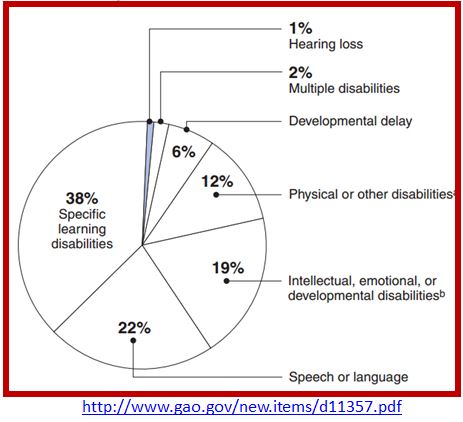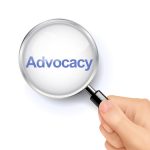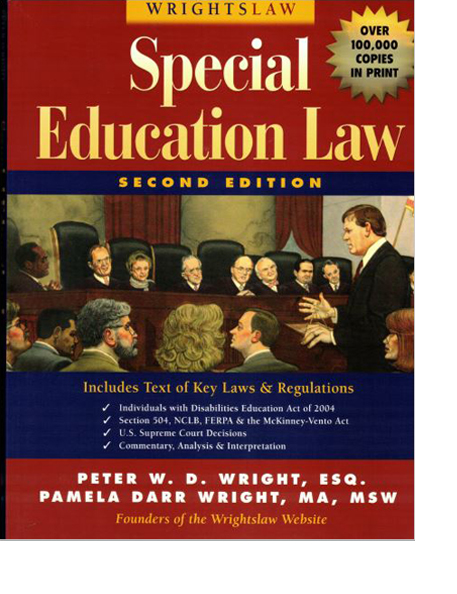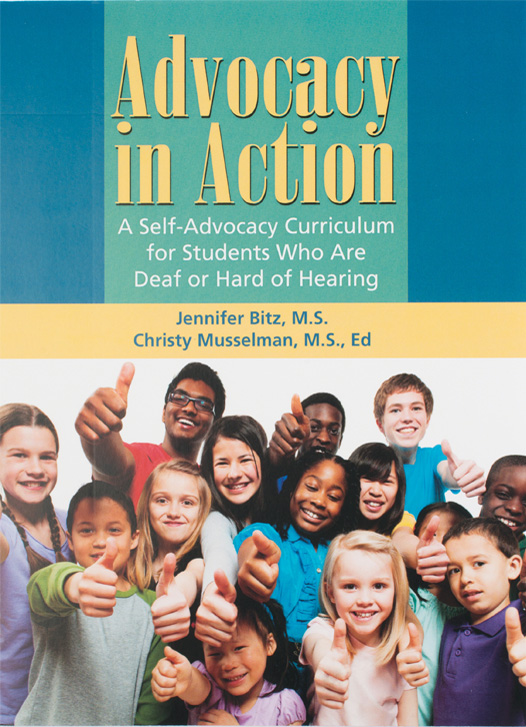Related Products
For Professionals
- Amplification
- Assessment of Student Skills, Challenges, Needs
- Early Childhood: Infants, Toddlers, Preschool
- Hearing Loss – Identification, Impact and Next Steps
- IDEA Law Summary Information
- Language and Speech Development Issues
- Legal Issues in Serving Children with Hearing Loss
- Listening (Auditory Skills) Development
- Planning to Meet Student Needs
- Self-Advocacy Skills for Students with Hearing Loss
- Self-Concept: How the Child with Hearing Loss Sees Himself
- Social Skills
- Speech Perception & Learning
Related Teacher Tools Takeout Items
Legal Issues in Serving Children with Hearing Loss
Webpages in the Legal Issues section of the Supporting Success website:
- IDEA Law Summary Information
- Issues: Eligibility Determination
- Access via the Americans with Disabilities Act
- 504 Plans
The information included in this series of webpages has been derived from sections of the law, Office of Special Education Program comments and discussion provided at
http://idea.ed.gov/explore/home. The guidance provided in that website helps clarify the intent of IDEA and may be useful to professionals and parents alike who are trying to advocate appropriate services and supports for children with hearing loss. Another valuable and brief summary is at
http://www2.ed.gov/about/offices/list/ocr/docs/hq9806.html
NOTE: this information does NOT constitute legal advice.
2017 Supreme Court Ruling Alters IEP Landscape

“Parents should not hesitate to go for a more robust, challenging IEP goal and objectives,” said Gary Mayerson, a New York City civil rights attorney who specializes in representing people with disabilities. “They shouldn’t be intimidated by the school districts that have been used to repeating goals and objectives over and over again, year after year. That’s a classic no-no
now.”
READ THIS – US DOE FAQ Clarifying what is meant by “Meaningful Educational Benefit”
based on the March 2017 US Supreme Court Case: Endrew F. vs Douglas County School District
Why we need to advocate for appropriate provision of services
 The pie chart shown represents the percentage of all students aged 3-21 years in the United States who were provided special education services under IDEA in 2008 by area of primary disability. This chart does not reflect the number of students with hearing loss who are categorized under a different disability category as the primary learning challenge. In 2008 there were more than 78,000 children qualified for special education services under the category of deaf/hard of hearing/hearing impaired throughout schools in the 50 states.
The pie chart shown represents the percentage of all students aged 3-21 years in the United States who were provided special education services under IDEA in 2008 by area of primary disability. This chart does not reflect the number of students with hearing loss who are categorized under a different disability category as the primary learning challenge. In 2008 there were more than 78,000 children qualified for special education services under the category of deaf/hard of hearing/hearing impaired throughout schools in the 50 states.
With only 1% of students receiving special education being DHH, it is no wonder that many IEP teams and staff at neighborhood schools lack knowledge in the unique learning needs of children with hearing loss.

Million Dollar Settlement Highlights Need to Accommodate Students with Hearing Loss – 2015 case
Setting up FM system does not meet IDEA documentation rules – 2015 case
Letters from the Office of Special Education Programs
OSEP letters (2005 and beyond) can be found in a topical list by going to
http://www2.ed.gov/policy/speced/guid/idea/letters/revpolicy/index.html Some of these letters may pertain to issues regarding children with hearing loss.
Teachers CAN Advocate for Appropriate Student Services and Supports

A 2004 decision by the 9th Circuit Court of Appeals found in favor of a teacher who had repeatedly advocated for her students with disabilities. She had been directed to stop advocating, was removed from IEP teams, and ultimately fired. She cited issues including lack of educational access, administrative altering and backdating of IEPs, and failure to provide the required services. The Court decision included: ”
Teachers are uniquely situated to know whether students are receiving the type of attention and education that they deserve and, in this case, are federally entitled to. We have long recognized “the importance of allowing teachers to speak out on school matters because teachers are, as a class, the members of a community most likely to have informed and definite opinions on such matters. This is particularly so with respect to disabled children, who may not be able to communicate effectively that they lack appropriate facilities.”
Teachers may therefore be the only guardians of these children’s rights and interests during the school day. An important key to successful advocacy is putting concerns in writing, logging all communications, and being calmly persistent.
READ MORE
Assessment of Students with Hearing Loss MUST Consider their Full Range of Needs. June 1, 2018 court case: S.P. vs East Whittier City School Dist., Pasadena CA. A hard of hearing student was assessed and made eligible as a student with speech & language disorders; needs due to hearing loss not considered. The court ruled that by not tying special education services to her hearing loss, IDEA was violated. The IEP team must consider the child’s language and communication needs…, academic level, and
full
range
of
needs. Assessment of her auditory skills consisted only of review of records and observation. This level of assessment was deemed
insufficient to satisfy the district’s evaluation obligation. School teams must assess more broadly, in areas of development that are most likely to be impacted secondary to hearing loss. Formal and informal data in all areas of suspected disability are necessary.
READ MORE
Services for Students with Hearing Loss who are Educated in Private School
Parents have a right to choose to have their child educated in a private school. For children with hearing loss who need classroom hearing technology or have educational needs the question is often raised as to how much responsibility the local public school has to meet those needs. IDEA does include language about private schools (
http://idea.ed.gov/explore/search?search_option=all&query=private+school&GO.x=0&GO.y=0). Exactly how each local education agency chooses to interpret these regulations depends from area to area. All public school districts are required to conduct child find, which encompasses private schools. Assessments can be conducted with parent permission and if the child meets eligibility criteria the evaluation team develops a service plan to discuss with the family and the private school. A small percentage of IDEA funding received by public schools is dedicated to services for students from private schools. The district may choose to provide only child find and evaluation services using these funds. Some districts commit to providing hearing technology using these funds until they are exhausted, meaning that requests later in the year may not be honored. The district may also choose to provide services to the private school student however they are under no obligation to pay for transportation to/from the private and public schools. Neighboring school districts can implement the IDEA requirements for services to children in private schools to a very different extent. To reiterate, can a child with hearing loss from a private school receive services from the public school? It depends! Interested family members and professionals should review the language in IDEA and then speak to their local school district about the types and extent of services provided.
Updated January 2016.



